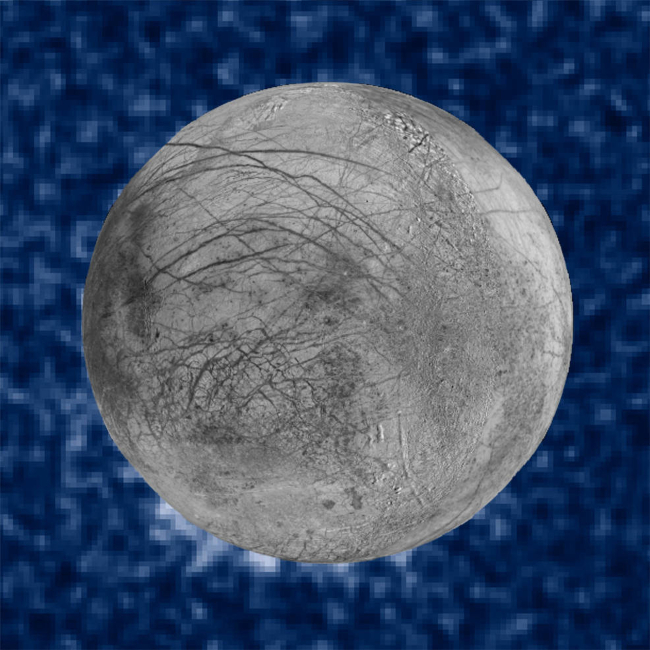More evidence of possible water plumes erupting from the surface of Jupiter‘s icy moon Europa has been spotted using NASA’s Hubble Space Telescope, the US space agency said Monday.
Europa, one of more than 50 moons circling the gas giant, is considered by NASA as a “top candidate” for life elsewhere in the solar system because it is believed to possess a massive, salty, subsurface ocean that is twice the size of Earth‘s.
The latest finding has given scientists fresh hope that a robotic spacecraft could one day fly past these potential plumes and learn about their contents without having to drill miles deep into the moon’s icy shell.
 |
captionThis image shows a composite image of possible water plumes on the south pole of Jupiter‘s moon Europa. (AP-Yonhap) |
“Today, we are presenting new Hubble evidence for water vapor plumes being expelled from the icy surface of Europa,” William Sparks, astronomer with the Space Telescope Science Institute in Baltimore told reporters on a conference call.
Using ultraviolet images taken by Hubble, a space telescope that was launched in 1990, the potential plumes are seen around the southern edge of Europa and appear as “dark fingers or patches of possible absorption,” Sparks said.
They were spotted on three separate occasions over the course of 15 months in 2014 when scientists observed Europa passing in front of Jupiter.
The potential plumes were only observed three out of 10 times when Europa passed by Jupiter, suggesting that the eruptions are intermittent, he said.
They also appeared to emerge near the same places, mostly along Europa‘s southern edge, where a previous team of scientists in 2012 -- using a different instrument aboard Hubble -- detected evidence of water vapor reaching more than 160 kilometers into space.
“If plumes exist this is an exciting finding because it potentially gives easier access to the ocean below,” said Sparks.
However, he cautioned that more evidence is needed for scientists to be certain, whether by more Hubble observations, or by some independent observing technique.
“I do want to stress that the observations are at the limit of what Hubble can do,” he added.
“We do not claim to have proven the existence of plumes but rather to have contributed evidence that such activity may be present.”
NASA announced last year that it intends to send a robotic spacecraft, equipped with a suite of scientific instruments, to circle Europa in the 2020s.
This mission will not seek to find life, but will measure the habitability of Europa, to see if conditions exist that could sustain living organisms on the moon which orbits Jupiter every three and a half days.
Last year, data from Hubble confirmed that Jupiter’s largest moon, Ganymede, has an underground ocean that contains more water than Earth‘s, broadening the hunt for places in the solar system where life might be able to exist.
Only one other moon is known in the solar system -- Saturn’s moon Enceladus -- to have icy plumes, based on data from NASA‘s Cassini spacecraft.
NASA’s latest mission to Jupiter, known as Juno, slipped into orbit around the fifth planet from the Sun in July, but will stay away from Europa in order to avoid the risk of Earthly contamination, NASA said.
NASA‘s next generation space telescope, known as the James Webb Space Telescope, launches in 2018, and it will also hunt for signs of water on Europa using infrared wavelengths of light.
“For a long time, humanity has been wondering whether there is life beyond Earth, and we are lucky to live in an era when we can address questions like that scientifically,” said Paul Hertz, director of the Astrophysics Division at NASA headquarters. (AFP)








